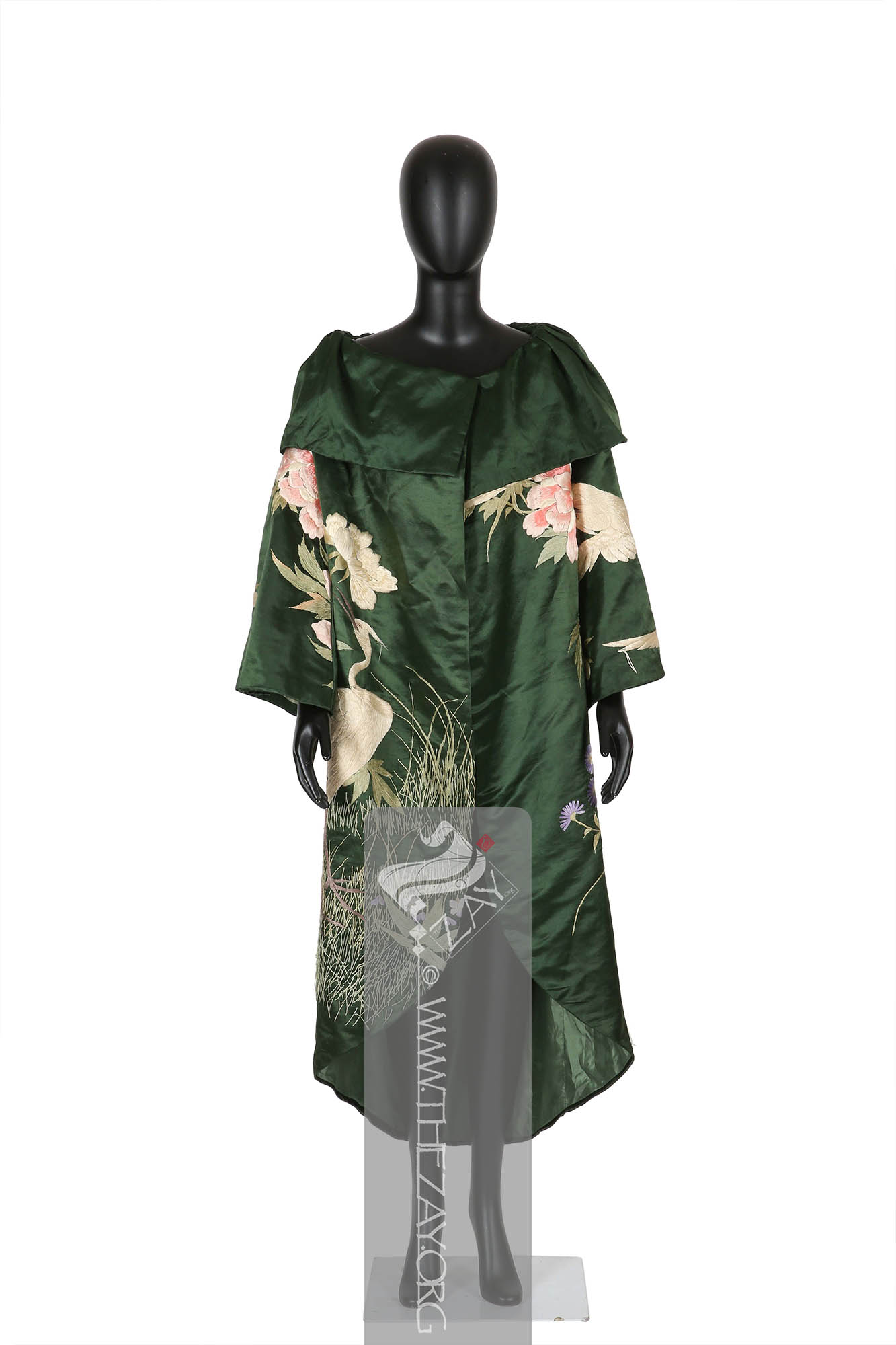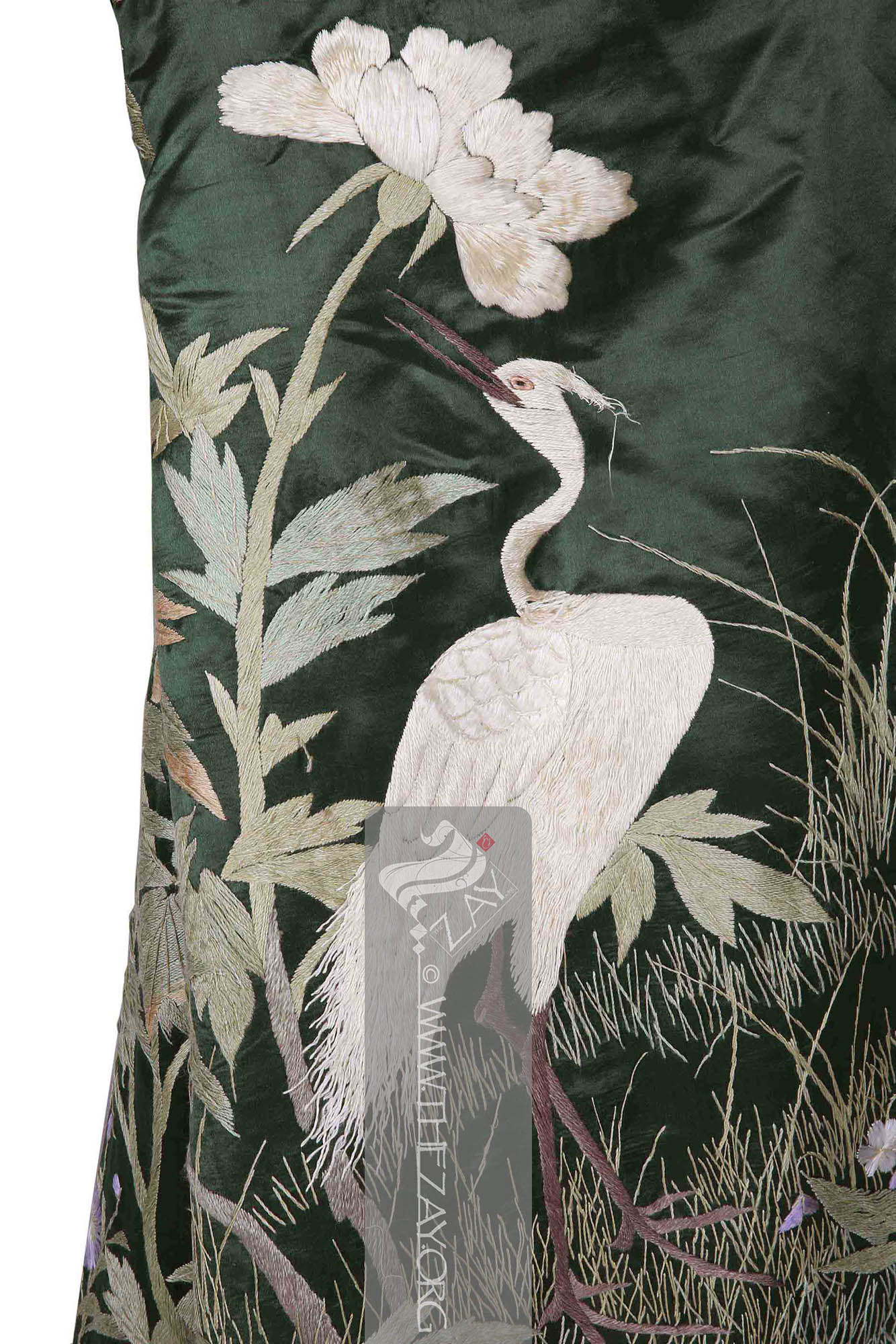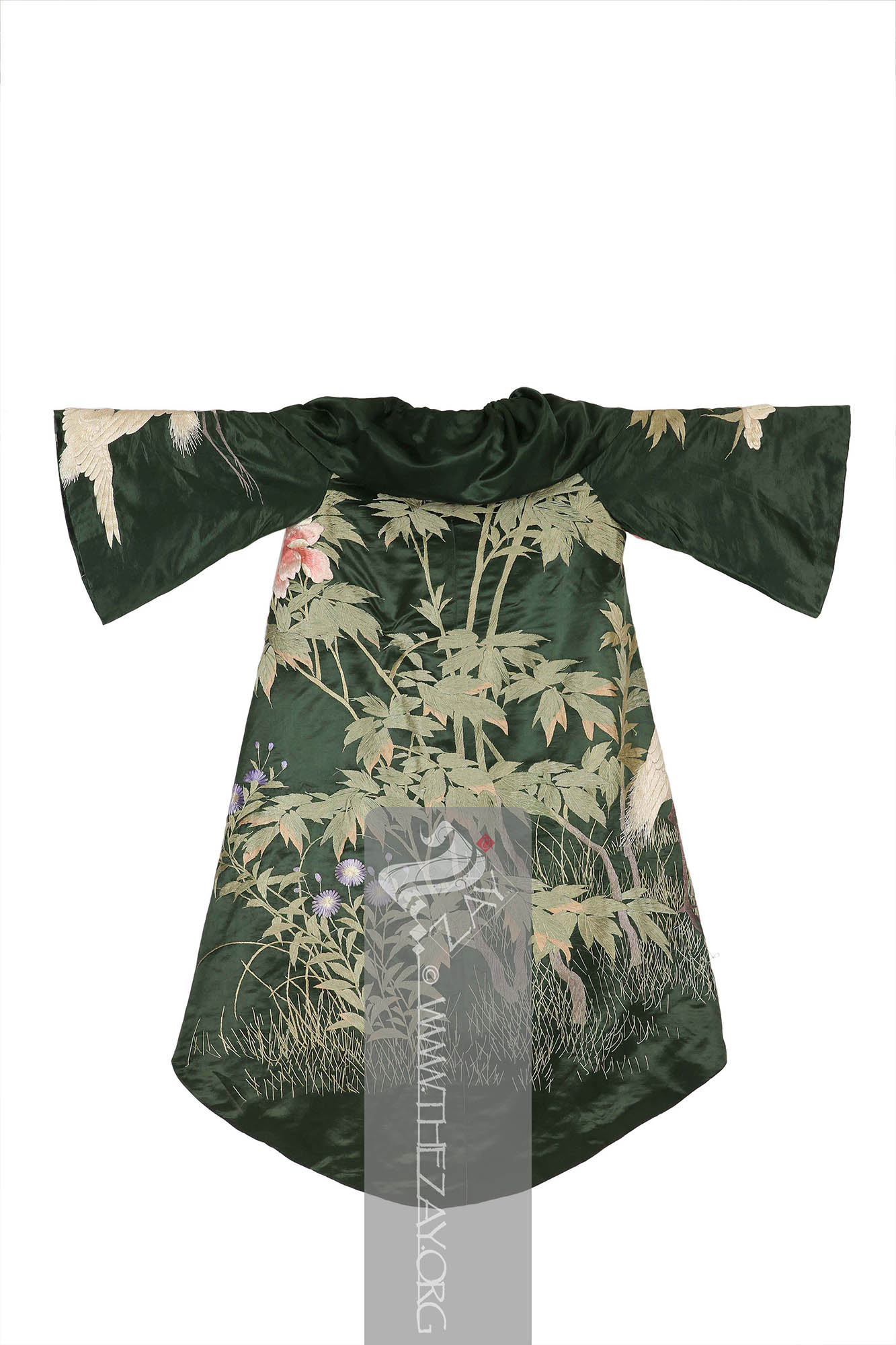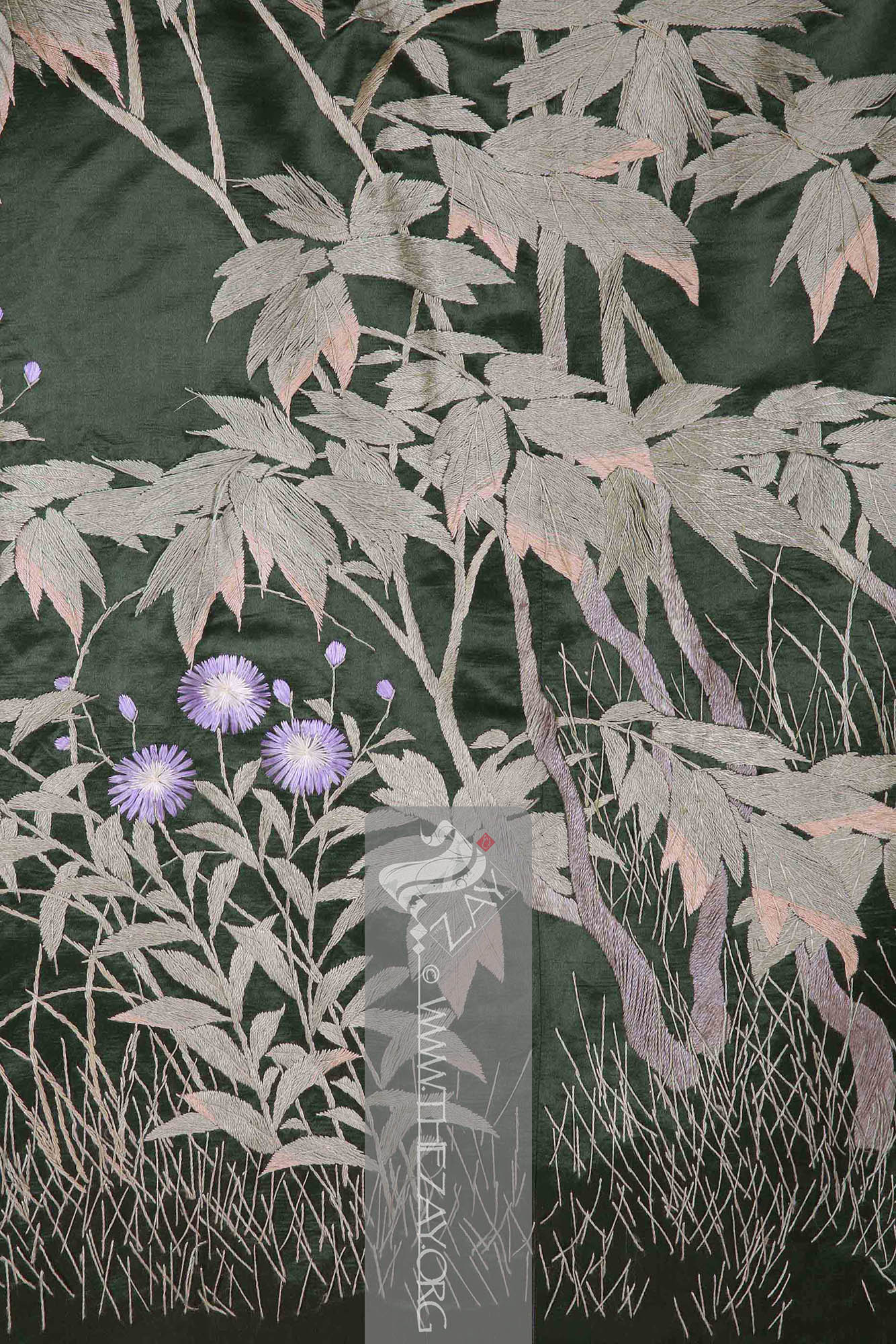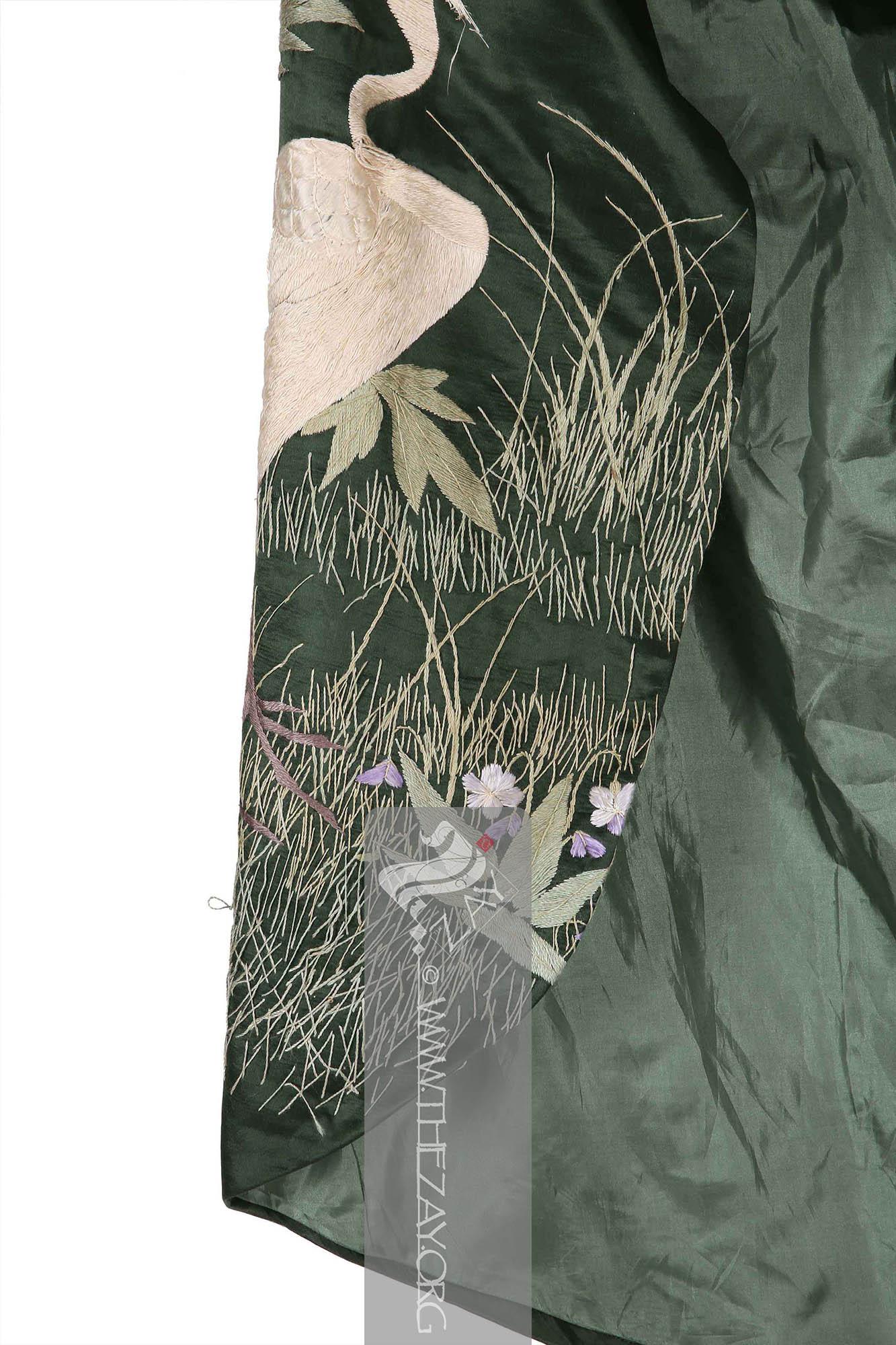Object History This vibrant green jacket was purchased by
Dr. Reem Tariq
Ṭariq: (Arabic; Synonym: tulle_bi_talli; talli; badla; khus_dozi ), series of small metal knots made on a woven net ground as embellishment. The term is commonly used in the Levant Arab region specifically in Lebanon.
El Mutwalli
Dr. Reem Tariq
Ṭariq: (Arabic; Synonym: tulle_bi_talli; talli; badla; khus_dozi ), series of small metal knots made on a woven net ground as embellishment. The term is commonly used in the Levant Arab region specifically in Lebanon.
el Mutwallī: Founder (CEO) of the Zay
Zay: (Arabic: costume, Pl. azyaā’), a set of clothes in a style typical of a particular country or historical period. Initiative, a public figure, speaker and author. An expert curator and consultant in Islamic art and architecture, interior design, historic costume, and UAE heritage. in 2017 from a dealer in London to add to The
Zay
Zay: (Arabic: costume, Pl. azyaā’), a set of clothes in a style typical of a particular country or historical period. Initiative collection.
Object Features This is a beautiful bottle green silk jacket in (satin
Sātin: (Arabic: Zaytuni: from Chinese port of Zayton in Quanzhou province where it was exported from and acquired by Arab merchants), one of the three basic types of woven fabric with a glossy top surface and a dull back. Originated in China and was fundamentally woven in silk.) weave with (satin_stitch
Satin_stitch: (Synonym: Damask Stitch), is a type of flat embroidery stitch that creates a satin like smooth and shiny surface by closely spaced stitches, covering an entire area or shape.) embroidered embellishments in a range of colours. The piece is a typical Western style women’s jacket; however, the fabric is of Far Eastern origin. From its design distribution, it could have been either a panel made for the European market which was then constructed into a women’s jacket or a (
kimono
Kimono: (Japanese: ki : wearing, mono: thing, Singular: Kimono) A traditional Japanese long loose robe with wide sleeves tied with a sash around the waist. Presently it is the national dress of Japan. ) that was repurposed. Either way, the scrumptious piece is heavily embellished that depicts large idyllic scenery with cranes and bamboo trees alongside blooms like peonies and water lilies.
The embellishment is executed in
satin_stitch
Satin_stitch: (Synonym: Damask Stitch), is a type of flat embroidery stitch that creates a satin like smooth and shiny surface by closely spaced stitches, covering an entire area or shape. embroidery primarily in ivory, light green, brown, shades of beige and pink, lavender, and grey silk
floss
Floss: (Old French: flosche – nap of velvet), is a type of silk fibre obtained from the cocoons of wild silkworms. It is characterized by its long, fluffy fibers that are not tightly woven, making it ideal for use in various textile applications such as embroidery, lace-making, and sewing. threads. The piece is completely unlined and has a large folded or rolled collar with long loose bell-shaped sleeves.
While the origin of certain techniques and methods in textiles like
satin_stitch
Satin_stitch: (Synonym: Damask Stitch), is a type of flat embroidery stitch that creates a satin like smooth and shiny surface by closely spaced stitches, covering an entire area or shape. embroidery can be traced to China, and its spread across the world could be attributed to the Silk Road, other similar techniques and styles are believed to have originated independently in different regions of the world almost simultaneously in human history possibly from necessity and convenience.
Though The
Zay
Zay: (Arabic: costume, Pl. azyaā’), a set of clothes in a style typical of a particular country or historical period. Initiative is concerned mainly with the dress and adornment heritage of the Arab world, it does include in its collection articles from areas outside the region. These tend to be collected to illustrate specific shared elements and influences attesting that the Arab world never existed in a vacuum. It constantly drew, and continues to draw, inspiration and influences from the cultures it comes in contact with be it through trade or geopolitical circumstances, especially those countries within the old silk route.
Therefore, one cannot but draw parallels between many techniques used in such garments, such as (
couching
Couching: (Latin: collocare – Place together), in needlework and embroidery couching is a technique in which yarn or other materials are laid across the surface of the ground fabric and fastened in place with small stitches of the same or a different yarn
) and thread knotting techniques (
macrame
Macrame: (French: macramé – A hand-knotted textile from Turkish: makrama – table spread or towel, from Arabic: miqrama – bedspread possibly with knotted hanging fringes resembling dangling grapes or karam in Arabic) A form of textile or fringe made by a knotting cord in geometrical patterns possibly originating in Babylon and Assyria.Macrame
Macrame: (French: macramé – A hand-knotted textile from Turkish: makrama – table spread or towel, from Arabic: miqrama – bedspread possibly with knotted hanging fringes resembling dangling grapes or karam in Arabic) A form of textile or fringe made by a knotting cord in geometrical patterns possibly originating in Babylon and Assyria.: makrəˌmā: (Arabic: karam: tree with dangling grapes), ornamental fringe. The art of knotting cord or string in patterns to make decorative articles. Earliest recorded uses of macramé-style knots as decoration appeared in Babylonian and Assyrian carvings.), or flat metal adornment (
talli
Tallī: (Turkish: tel – wire, string), Gulf Arab – a woven braided trimming made with metal wire, threads and ribbons often sewn on detachable panels used as embellishments. Other – (Synonym: tulle_bi_talli
Tūlle_bi_tallī: (French: Tulle – a city in France where fine material for veil was first made; Turkish: tel – wire; Synonym: tariq; talli; badla; khus_dozi
Khus_dozi: (Persian: Khvosh – an Iranian province; dozi – needlework; Synonym: tariq; talli; tulle_bi_talli; badla), series of small metal knots made on a woven net ground as embellishment. The term is commonly used in Iran and parts of the Arabian Peninsula possibly because Khvosh was one of the centres for the craft.
), series of small metal knots made on a woven net ground as embellishment. The term is commonly used in the North African Arab region specifically in Egypt.
; tariq; badla; khus_dozi
Khus_dozi: (Persian: Khvosh – an Iranian province; dozi – needlework; Synonym: tariq; talli; tulle_bi_talli; badla), series of small metal knots made on a woven net ground as embellishment. The term is commonly used in Iran and parts of the Arabian Peninsula possibly because Khvosh was one of the centres for the craft.
), series of small metal knots made on a woven net ground as embellishment.
), that are quite similar to those found in different parts of the Arab region.
The
kimono
Kimono: (Japanese: ki : wearing, mono: thing, Singular: Kimono) A traditional Japanese long loose robe with wide sleeves tied with a sash around the waist. Presently it is the national dress of Japan. , in particular, displays similarities that can be drawn with the pattern of Arab women’s overgarment or the (
thawb
Thawb: (Arabic: thawb, Pl. Athwāb/thībān), can be pronounced thobe
Thobe: (Arabic: thawb, Pl. Athwāb/thībān), can be pronounced thawb or tobe
Tobe: (Arabic: thawb, Pl. Athwāb/thībān), can be pronounced thawb or thobe based on locale. The standard Arabic word for ‘fabric’ or ‘garment’. It can refer to a qamīs-like tunic worn by men and women in the Arabian Peninsula, Iraq, the southern and south-western ports and islands of Iran, and some countries in East and West Africa. More specifically, it can refer to the square-shaped Bedouin overgarment worn by women. based on locale. The standard Arabic word for ‘fabric’ or ‘garment’. It can also refer to a qamīs-like tunic worn by men and women in the Arabian Peninsula, Iraq, the southern and south-western ports and islands of Iran, and some countries in East and West Africa. More specifically, it can refer to the square-shaped Bedouin overgarment worn by women. or tobe
Tobe: (Arabic: thawb, Pl. Athwāb/thībān), can be pronounced thawb or thobe based on locale. The standard Arabic word for ‘fabric’ or ‘garment’. It can refer to a qamīs-like tunic worn by men and women in the Arabian Peninsula, Iraq, the southern and south-western ports and islands of Iran, and some countries in East and West Africa. More specifically, it can refer to the square-shaped Bedouin overgarment worn by women. based on locale. The standard Arabic word for ‘fabric’ or ‘garment’. It can also refer to a qamīs-like tunic worn by men and women in the Arabian Peninsula, Iraq, the southern and south-western ports and islands of Iran, and some countries in East and West Africa. More specifically, it can refer to the square-shaped Bedouin overgarment worn by women in the Arabian Gulf region. ), common to the Gulf region, constructed of three uncut panels of broad clothes forming the central body panel and the side sleeve panels very similar in shape to the
kimono
Kimono: (Japanese: ki : wearing, mono: thing, Singular: Kimono) A traditional Japanese long loose robe with wide sleeves tied with a sash around the waist. Presently it is the national dress of Japan. .
Links
- https://blogs.brown.edu/amst-1905l-s01-spring-2017/cheongsam
Cheongsam: (From Cantonese: chèuhngsāam; from Shanghainese: zansae – Long shirt or dress; Synonym – Qipao
Qipao: (Synonym – cheongsam), meaning ‘Banner robes’ were originally traditional Manchu long loose robes worn over trousers. In the early 20th century, it morphed into its present form and incorporated Western style in the 1920s and became interchangeable with a cheongsam. ), was originally a traditional Chinese long gown with high collars and a form-fitting silhouette. It morphed into its present form in the early 20th century and incorporated Western style in the 1920s and became interchangeable with a qipao
Qipao: (Synonym – cheongsam), meaning ‘Banner robes’ were originally traditional Manchu long loose robes worn over trousers. In the early 20th century, it morphed into its present form and incorporated Western style in the 1920s and became interchangeable with a cheongsam. . -then-and-now/
- https://www.metmuseum.org/art/collection/search/83978
- https://eresources.nlb.gov.sg/infopedia/articles/SIP_2013-09-27_171732.html
- http://en.chinaculture.org/library/2008-01/28/content_43933.htm
- https://www.thepankou.com/qipao
Qipao: (Synonym – cheongsam), meaning ‘Banner robes’ were originally traditional Manchu long loose robes worn over trousers. In the early 20th century, it morphed into its present form and incorporated Western style in the 1920s and became interchangeable with a cheongsam. -cheongsam
Cheongsam: (From Cantonese: chèuhngsāam; from Shanghainese: zansae – Long shirt or dress; Synonym – Qipao
Qipao: (Synonym – cheongsam), meaning ‘Banner robes’ were originally traditional Manchu long loose robes worn over trousers. In the early 20th century, it morphed into its present form and incorporated Western style in the 1920s and became interchangeable with a cheongsam. ), was originally a traditional Chinese long gown with high collars and a form-fitting silhouette. It morphed into its present form in the early 20th century and incorporated Western style in the 1920s and became interchangeable with a qipao
Qipao: (Synonym – cheongsam), meaning ‘Banner robes’ were originally traditional Manchu long loose robes worn over trousers. In the early 20th century, it morphed into its present form and incorporated Western style in the 1920s and became interchangeable with a cheongsam. . -edging/




